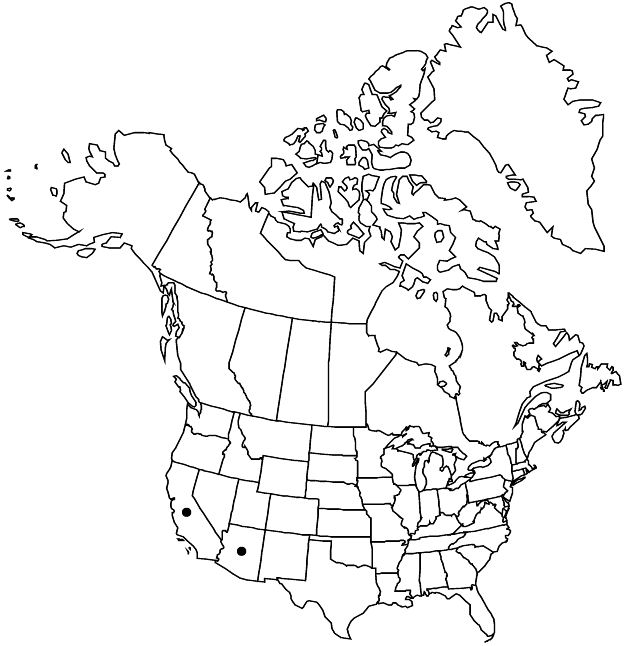Difference between revisions of "Mentzelia desertorum"
Phytologia 21: 280. 1971.
FNA>Volume Importer |
FNA>Volume Importer |
||
| Line 31: | Line 31: | ||
|elevation=30–1000 m. | |elevation=30–1000 m. | ||
|distribution=Ariz.;Calif.;Mexico (Baja California;Sonora). | |distribution=Ariz.;Calif.;Mexico (Baja California;Sonora). | ||
| − | |discussion=<p>Mentzelia desertorum, a diploid, is most similar morphologically to the tetraploid M. obscura, and the two species may be difficult to distinguish prior to seed maturation. However, many populations of M. desertorum have narrow basal leaves with short, widely spaced lobes that are unique among species within sect. Trachyphytum.</p> | + | |discussion=<p><i>Mentzelia desertorum</i>, a diploid, is most similar morphologically to the tetraploid <i>M. obscura</i>, and the two species may be difficult to distinguish prior to seed maturation. However, many populations of <i>M. desertorum</i> have narrow basal leaves with short, widely spaced lobes that are unique among species within sect. Trachyphytum.</p> |
|tables= | |tables= | ||
|references= | |references= | ||
| Line 55: | Line 55: | ||
|publication year=1971 | |publication year=1971 | ||
|special status=Conservation concern | |special status=Conservation concern | ||
| − | |source xml=https://jpend@bitbucket.org/aafc-mbb/fna-data-curation.git/src/ | + | |source xml=https://jpend@bitbucket.org/aafc-mbb/fna-data-curation.git/src/8f726806613d60c220dc4493de13607dd3150896/coarse_grained_fna_xml/V12/V12_823.xml |
|genus=Mentzelia | |genus=Mentzelia | ||
|section=Mentzelia sect. Trachyphytum | |section=Mentzelia sect. Trachyphytum | ||
Revision as of 14:50, 18 September 2019
Plants candelabra-form, 5–40 cm. Basal leaves persisting; petiole present or absent; blade linear, margins usually shallowly lobed, lobes rounded. Cauline leaves: petiole absent; blade ovate-lanceolate to linear, to 12 cm, margins shallowly lobed or entire. Bracts green, ovate to ovate-lanceolate, 3.6–4.7 × 1.6–2.3 mm, width 1/3–1/2 length, not concealing capsule, margins entire. Flowers: sepals 2–4 mm; petals yellow to orange proximally, yellow distally, 2–6 mm, apex acute or rounded; stamens 10–30, 2–4 mm, filaments monomorphic, filiform, unlobed; styles 2–4 mm. Capsules clavate, 12–27 × 1–2.5 mm, axillary curved to 180° at maturity, usually inconspicuously longitudinally ribbed. Seeds 10–50, in 2+ rows distal to mid fruit, tan, usually not, occasionally sparsely, dark-mottled, usually irregularly polygonal, occasionally triangular prisms proximal to mid fruit, surface tessellate under 10× magnification; recurved flap over hilum absent; seed coat cell outer periclinal wall flat to slightly convex. 2n = 18.
Phenology: Flowering Feb–Mar.
Habitat: Sandy flats, washes, creosote-bush scrub.
Elevation: 30–1000 m.
Distribution

Ariz., Calif., Mexico (Baja California, Sonora).
Discussion
Mentzelia desertorum, a diploid, is most similar morphologically to the tetraploid M. obscura, and the two species may be difficult to distinguish prior to seed maturation. However, many populations of M. desertorum have narrow basal leaves with short, widely spaced lobes that are unique among species within sect. Trachyphytum.
Selected References
None.